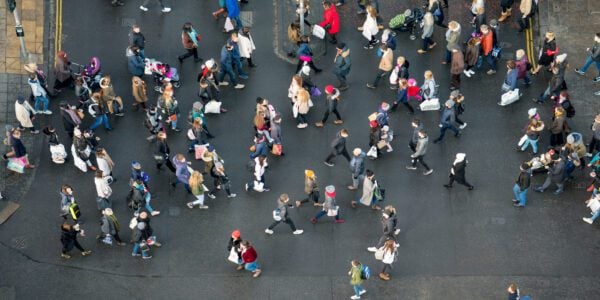
10/05/21
3 min read
Contrary to the common message that retirement saving should start young, there are good reasons why the proportion of earnings set aside for retirement should increase substantially through working life for many people. This is according to new Nuffield-funded research from the IFS.
Many employees experience earnings growth over their lifetimes, and would therefore prefer to save more at older ages when earnings are higher. Parents would also be expected to save more for retirement after their children have left home and expenses are lower.
Automatic enrolment into workplace pensions does not currently encourage contribution rates that increase with age, but future adjustments to automatic enrolment or other policies to encourage retirement saving should carefully consider these issues. Examples of policies that should be considered include default employee contribution rates that rise with age, increases in employee contribution rates that are triggered by earnings increases, and nudges to encourage individuals to increase their pension saving when their children leave home or when they finish debt repayments such as student loans or mortgages.
The research uses an economic model to illustrate how people would be expected to change their saving rates over their life in response to predictable factors. The model is inevitably a simple approximation to real life, but yields important conclusions with implications for the design of real-world policies.
Key findings
- If earnings are known to increase with age, then earnings growth and costs associated with children would be expected to lead people to delay the majority of their retirement saving until older ages – particularly to after children have left home when expenses fall.
- If employers make pension contributions only if people also save themselves, then employees would be expected to save throughout working life, but in low earning years only at the minimum amount required to get the employer contribution. Saving rates for retirement would still be expected to increase dramatically at older ages, and particularly when expenses associated with children fall.
- Factoring in uncertainty about the future path of earnings would lead to more saving happening earlier in life. But the same pattern – that contributions would be expected to increase at older ages, particularly when children leave home – remains.
- Graduates with student loans would be expected to increase retirement saving by the full amount of their previous loan repayments when loans are repaid or written off.
For a ‘typical’ graduate with two children our modelling suggests that they should increase their pension contributions from around 5% of pay before the children leave home to between 15 and 25% of pay after that. That would mean making two thirds of their pension contributions after the age of 45.
Policy makers should carefully consider these life cycle factors when developing future policies to increase retirement saving. Focus should be on policies that increase retirement saving at the best time in people’s lives.
These findings also highlight an important downside of defined benefit pension arrangements: contribution rates are set by the scheme rules, and cannot be varied over working life to suit an individual’s circumstances or the timing of their capacity to save. This lack of flexibility is an often over-looked cost of public sector pensions, that likely results in many young public sector workers saving more for retirement than they would ideally like to at that stage in their lives.
Rowena Crawford, an Associate Director at IFS and one of the authors of the report, said:
“There are good reasons why individuals should not want to save a constant share of their earnings for retirement over their entire working life. This does not make automatic enrolment, with its single default minimum contribution rate, a bad policy. But as policy makers consider how to increase retirement saving further, focus should be on policies that increase retirement saving at the best time in people’s lives rather than just increasing saving irrespective of their circumstances. Default minimum employee contributions to workplace pensions that rise with age are an obvious option. A smart, joined up, approach across Government could also involve employee pension contributions rising when an individual’s student loan repayments come to an end.”
Alex Beer, Welfare Programme Head at the Nuffield Foundation said:
“This important analysis demonstrates how people’s ability to save can change as they age, as their earnings grow, and as their family circumstances change. Policies to optimise pensions saving might therefore take a more holistic view of saving across the life course, to consider when and how to capitalise on opportunities to change the rate at which people save.”
Download report






















































